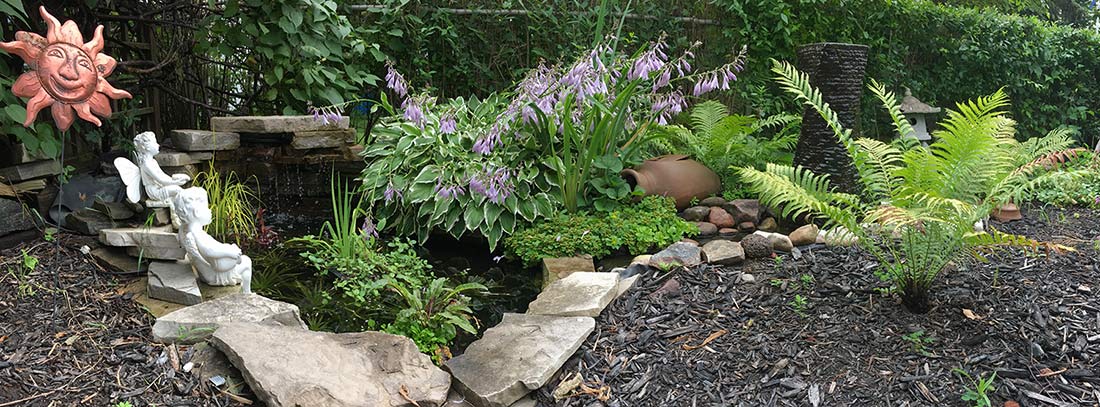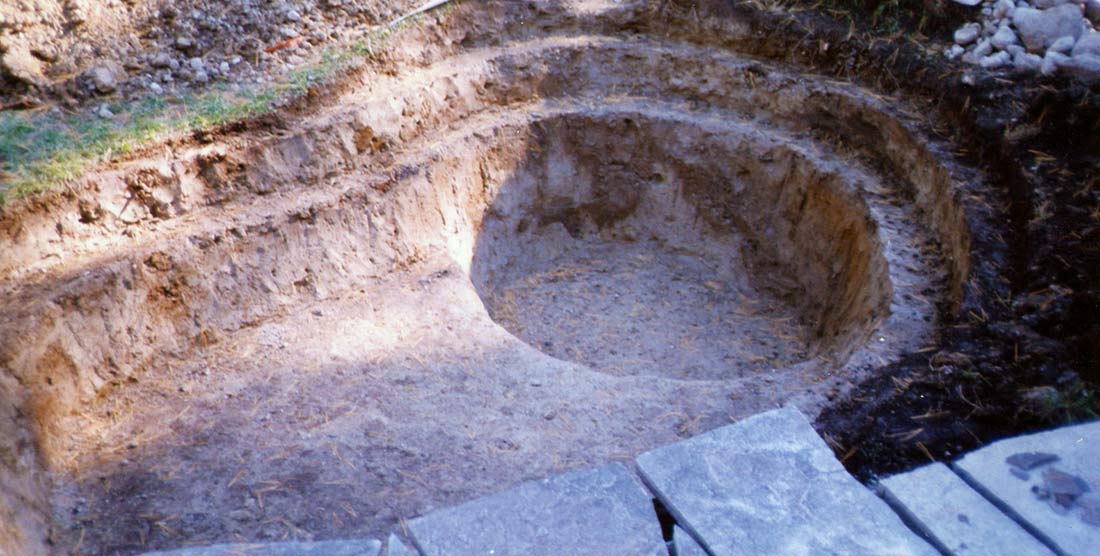Most people who have ponds will tell you that they get immense satisfaction and enjoyment from their pond (or ponds in many cases). People will often spend hours just relaxing by their pond enjoying the sights and sounds of the fish in the pond and the wildlife that visit the pond. A well designed pond will bring you satisfaction for many years to come, but there are some things you should consider before putting a shovel in the ground. Here are some pond design tips to help you create the perfect pond for your back yard.

There are basically four types of ponds that people generally build:
Whether you are planning to build your pond yourself, or hire a contractor to install your pond, there are many things to consider before you start. If you know someone that has a pond, talk to them about what they like about their pond, and what they would change. I don’t know any pond owners who don’t wish they had done at least one thing different when they built their pond.
WHEN PLANNING YOUR POND – MAKE IT AS LARGE AS POSSIBLE!! I cannot stress this point enough. Probably the biggest regret most pond owners have, is that they did not build their pond big enough. One customer relayed this advice that was given to him while he was planning his pond: “Plan your pond, then double the size”. He said it was the best advice anyone ever gave him.
It is important to make your pond adequately deep, even if you are not building a large pond. Shallow ponds tend to heat up too much in the summer months and freeze solid in the winter. The minimum deepest point for any pond should be 24″ / 60 cm. If you are planning on putting goldfish in the pond make a deep area at least 36″/ 90 cm. This will the give the goldfish extra room to overwinter below the ice during winter. Ponds for koi should have a large proportion of the pond 48″/120 cm or deeper to give them adequate room to grow and properly develop.
Many people often don’t think that they are going to put fish in their pond, but 9 times out of 10 they end up with goldfish or koi in their pond and soon realize they wish they had made it bigger or deeper.
Shelves or ledges are important in ponds if you are considering having aquatic plants. Having level shelves to place plants on, makes it much easier than trying to arrange your plants on blocks or upside-down pails to provide them with the proper depth. Having shelves at various depths allows for placement of plants that have different requirements. Make the first shelf 6″-12″ / 15 cm-30c cm deep for most marginal plants, 24″ / 60 cm deep is great for most submerged plants and water lilies. Having shelves deeper than 24″ is not usually necessary for plants.

Deciding where to place your pond in your yard can be challenging. Personally, I find it best to have your pond right at the edge of a patio or deck, so that you are close enough to the pond to really enjoy it while spending time there.
Some people have a natural hill or slope to work with in their yard. This makes a perfect starting point for a waterfall / stream combination because it will look more natural.
Try to avoid building your pond in deep shade, especially if you want to have any success with plants in your pond. Many people build their ponds near or under large trees to provide some shade to reduce algae growth, but don’t realize that 5-10 years down the line, the tree might be twice as big, and will also drop twice as many leaves in the fall. With a properly designed pond with enough plants, algae won’t be a big problem, even if your pond is located in full sun.
Filtration is probably the most important component of a pond, especially a pond with fish. When most people build a pond, they don’t realize how important it is to have a good filtration system. We see many customers that have filters that are undersized for the size of their pond and/or the number of fish they have. These people often spend much more time on maintenance than they should have to because they need to clean their filters multiple times per week. We have even had customers that are afraid to go away for a weekend because their filters will completely clog up if they do.
A properly sized filtration system not only means less maintenance for you, but also better water quality and clarity, healthier fish and more time for you to enjoy your pond. If you can afford it, always buy a filter that is one size bigger than what is recommended for your pond, you won’t regret it.